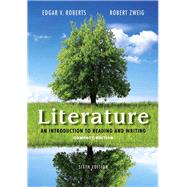ALERT: Before you purchase, check with your instructor or review your course syllabus to ensure that you select the correct ISBN. Several versions of Pearson's MyLab & Mastering products exist for each title, including customized versions for individual schools, and registrations are not transferable. In addition, you may need a CourseID, provided by your instructor, to register for and use Pearson's MyLab & Mastering products.
Packages
Access codes for Pearson's MyLab & Mastering products may not be included when purchasing or renting from companies other than Pearson; check with the seller before completing your purchase.
Used or rental books
If you rent or purchase a used book with an access code, the access code may have been redeemed previously and you may have to purchase a new access code.
Access codes
Access codes that are purchased from sellers other than Pearson carry a higher risk of being either the wrong ISBN or a previously redeemed code. Check with the seller prior to purchase.
For literature-based Composition II and Introduction to Literature courses.
Literature: An Introduction to Reading and Writing, Compact Sixth Edition is founded on the principles of writing about literature. First, students learn how to engage deeply and critically with a broad selection of stories, poems, and plays. Second, the writing process is carefully and thoroughly integrated into the presentation of all literary genres, elements, and major writers throughout the entire text. Complete coverage of writing about each literary element, “casebooks” that allow for deeper exploration of important writers in each genre, and a total of 53 exemplary student essays and paragraphs with accompanying commentary ensure that students gain a thorough comprehension of the conventions, strategies, and organizational patterns to allow them to think critically about literature and to produce thoughtful and compelling essays, paragraphs, documented research papers, and examination responses.
--








